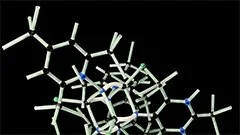Introduction
The digestive system, a vital organ in vertebrates and certain invertebrates, is responsible for ingesting food, breaking it down into nutrients, and facilitating their absorption. This complex process involves various organs that work in harmony to maintain the overall health of an organism. In this comprehensive course on Histology of the Digestive System, we will delve into the structural organization, cellular composition, and functional aspects of each component of the digestive system.
Overview
The digestive system is a long tubular tract that extends from the mouth to the anus in vertebrates. It consists of several organs, namely:
- Mouth (oral cavity)
- Pharynx
- Esophagus
- Stomach
- Small Intestine
- Duodenum
- Jejunum
- Ileum
- Large Intestine
- Cecum
- Colon (Ascending, Transverse, Descending, and Sigmoid)
- Rectum
- Anus
Each of these organs exhibits unique histological features that enable them to perform their specialized functions effectively.
The Mouth
The mouth, or oral cavity, is the beginning of the digestive system. It houses numerous accessory glands and structures that play crucial roles in initiating the process of digestion.
Epithelium
The epithelial lining of the mouth consists primarily of stratified squamous epithelium, which provides a protective barrier against mechanical wear and tear from food particles and microorganisms. The oral cavity also contains specialized epithelial structures called papillae, which enhance sensory perception during feeding.
Glands
The oral cavity is home to several major and minor salivary glands, each secreting different types of fluid containing enzymes, electrolytes, and mucus to aid in digestion and lubrication. The major salivary glands include the parotid, submandibular, and sublingual glands.
The Pharynx
The pharynx is a musculomembranous tube that serves as a common passageway for food, air, and sound. It connects the oral cavity to the esophagus during deglutition (swallowing).
Epithelium
The epithelial lining of the pharynx is pseudostratified columnar epithelium that contains both columnar and goblet cells. The pharyngeal mucosa produces mucus, which lubricates the passageway and protects it against mechanical damage and microbial invasion.
Muscles
The walls of the pharynx contain three pairs of muscles: superior, middle, and inferior constrictors. These muscles aid in swallowing by closing off the passageway and propelling food towards the esophagus.
The Esophagus
The esophagus is a muscular tube that connects the pharynx to the stomach. It functions as a conduit for transporting food from the mouth to the stomach.
Epithelium
The epithelial lining of the esophagus is stratified squamous epithelium, which protects against mechanical damage and chemical irritation caused by ingested materials.
Muscles
The walls of the esophagus contain three layers of muscles: an outer longitudinal layer, a middle circular layer, and an inner oblique layer. These muscular layers facilitate peristalsis, which propels food towards the stomach.
The Stomach
The stomach is a J-shaped, muscular sac that stores ingested food temporarily before churning it to prepare it for digestion in the small intestine.
Epithelium
The gastric epithelium consists of simple columnar epithelial cells called gastric glands. These glands secrete mucus, hydrochloric acid, pepsin, and other enzymes to initiate the process of digestion.
Muscles
The stomach's walls contain three layers of muscles: an outer longitudinal layer, a middle circular layer, and an inner oblique layer. These muscular layers propel the food towards the small intestine through a combination of peristalsis and contractions known as mixing or churning.
The Small Intestine
The small intestine is the longest segment of the digestive tract, responsible for the majority of nutrient absorption. It is divided into three parts: duodenum, jejunum, and ileum.
Epithelium
The epithelial lining of the small intestine consists of columnar cells called enterocytes, which have numerous microvilli on their surfaces that increase the absorptive surface area. The villi also contain specialized glands called Brunner's glands, which secrete mucus and bicarbonate to neutralize gastric acid and protect the intestinal lining.
Muscles
The walls of the small intestine contain three layers of muscles: an outer longitudinal layer, a middle circular layer, and an inner oblique layer. These muscular layers propel food through the intestine by peristalsis and mixing.
The Large Intestine
The large intestine, also known as the colon, is responsible for the reabsorption of water and electrolytes from undigested material and the storage of fecal matter before defecation. It consists of several sections: cecum, colon (ascending, transverse, descending, and sigmoid), rectum, and anus.
Epithelium
The epithelial lining of the large intestine is simple columnar epithelium with goblet cells that secrete mucus to lubricate the passageway. The colon's mucosa also contains cells called Paneth cells, which secrete antimicrobial peptides to protect against bacterial overgrowth.
Muscles
The walls of the large intestine contain three layers of muscles: an outer longitudinal layer, a middle circular layer, and an inner oblique layer. These muscular layers facilitate peristalsis, which propels fecal matter towards the rectum and anus for elimination.
In conclusion, this comprehensive course on Histology of the Digestive System offers a detailed exploration of each organ's structural organization, cellular composition, and functional aspects within the digestive tract. Understanding the intricacies of these components enables students to appreciate the complexity and interdependence of the body's systems and promote a deeper understanding of human physiology.
MCQ: Test your knowledge!
Do you think you know everything about this course? Don't fall into the traps, train with MCQs! eBiologie has hundreds of questions to help you master this subject.
These courses might interest you
Create a free account to receive courses, MCQs, and advice to succeed in your studies!
eBiologie offers several eBooks containing MCQ series (5 booklets available free for each subscriber).



